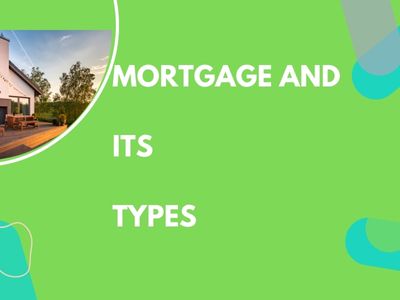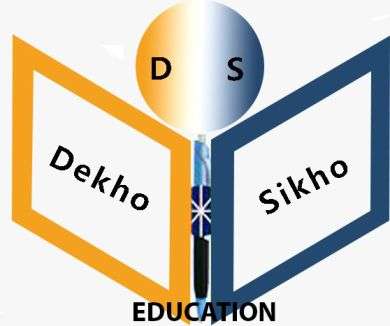When you and a lender enter into a Mortgage , the lender is granted the power to seize your property if you are unable to pay back the loan amount plus interest.

What is Mortgage?
A mortgage is a means to secure a loan by using your real estate as collateral.
Land, a home, or a building are all examples of real property.
Many people use this to purchase the home they use as collateral for their mortgage:
The loan gives them with the funds to do so, and the loan is secured by the residence.
The fees paid while obtaining a loan, whether when purchasing a home or refinancing, are known as mortgage closing charges.
These charges are made by lenders in return for establishing your loan.
Closing expenses include items like your home appraisal and title searches.
There is a debtor and a creditor in a mortgage.
The owner of the property is the debtor or mortgagee, while the owner of the loan is the creditor or mortgagee.
The debtor receives the funds along with the loan during the mortgage transaction and makes a repayment commitment.
Over time, the debtor will be reimbursed for the money with interest (usually in payments made each month by the debtor).
The mortgaged property may be taken by the creditor in the event that the debtor defaults on the loan.
We call this foreclosure.
How Mortgage Work:
Mortgages are a financing option that both private individuals and commercial entities utilise to purchase real estate.
Over a predetermined period of time, the borrower repays the loan amount plus interest until they have complete ownership of the property.
The majority of conventional mortgages amortise completely.
The regular payment amount will remain the same, but over the course of the loan, varying amounts of principal and interest will be paid with each payment.
The typical length of a mortgage is 30 or 15 years.
Mortgages are also referred to as claims on property or liens against it.
The lender may foreclose on the property if the borrower fails to make mortgage payments.
A residential buyer, for instance, commits their home to their lender,
which afterwards has a right to the property.
In the event that the buyer cannot pay their debt, this protects the lender’s interest in the property.
In the event of a foreclosure, the lender has the right to evict the occupants, sell the house, and use the proceeds to settle the mortgage debt.
What is Mortgage process:
Interested parties start the process by submitting an application to one or more lenders.
The borrower’s ability to repay the loan will be verified by the lender.
This could consist of recent tax returns, bank and investment statements, and proof of work.
Usually, the lender will also perform a credit check.
The lender will present the borrower with a loan up to a specific amount with a specific interest rate if the application is accepted.
Pre-approval, often known as applying for a mortgage, is a process that homebuyers can use whether they have already decided on a property to purchase or are still looking.
When a buyer and seller have reached an agreement on the terms of the transaction, they or their agents will meet at a closing.
The borrower pays the lender a down payment at this time.
The buyer will sign any remaining its agreements, and the seller will transfer possession of the property to the buyer and receive the agreed-upon amount of money.
At the closing, the lender may levy costs for originating the loan (sometimes in the form of points).
Types of Mortgage:
Simple mortgage:
According to section 58B of the Indian Transfer of Property Act,
A simple mortgage is a transaction in which “the mortgagor commits himself to pay the mortgage money without delivering possession (ownership or possession) of the mortgaged property,” binds and stipulates expressly or implicitly.
In the event of non-compliance with his contract, the mortgagor shall have the right to sell the mortgaged property at a suit (a case at law) by a decree an order.
There is no foreclosure on the mortgaged property; the sale proceeds are used to service the mortgage to the extent necessary.
Reverse mortgage:
With a reverse mortgage, the lender pays the borrower’s monthly payments as opposed to the borrower paying the lender.
The stream of payments is inverted.
People can use the value of their homes to generate tax-free income through a reverse mortgage.
They primarily aim to increase the financial and personal independence of seniors.
Depending on the jurisdiction, these agreements are referred to as reverse mortgages, lifelong mortgages, or equity release mortgages (relating to home equity).
The age restriction results from the fact that loans are often not repaid until the borrowers pass away.
Fixed-Rate Mortgage:
The most common mortgage type is fixed-rate. With a fixed-rate mortgage, both the interest rate and the borrower’s monthly mortgage payments remain constant during the loan’s term.
A traditional mortgage is another name for a fixed-rate loan.
Adjustable-Rate :
An adjustable-rate mortgage (ARM) has an initial fixed interest rate followed by periodic changes based on current interest rates.
The mortgage may be more cheap in the near term if the initial interest rate is below market, but if it climbs significantly over time, it may become less so.
Usually, ARMs feature limitations or limits on the amount that the interest rate can increase each time it adjusts and overall throughout the course of the loan.
When a buyer and seller have reached an agreement on the terms of the transaction, they or their agents will meet at a closing.
The borrower pays the lender a down payment at this time. The buyer will sign any remaining its agreements, and the seller will transfer possession of the property to the buyer and receive the agreed-upon amount of money.
At the closing, the lender may levy costs for originating the loan (sometimes in the form of points).
Read Also:
